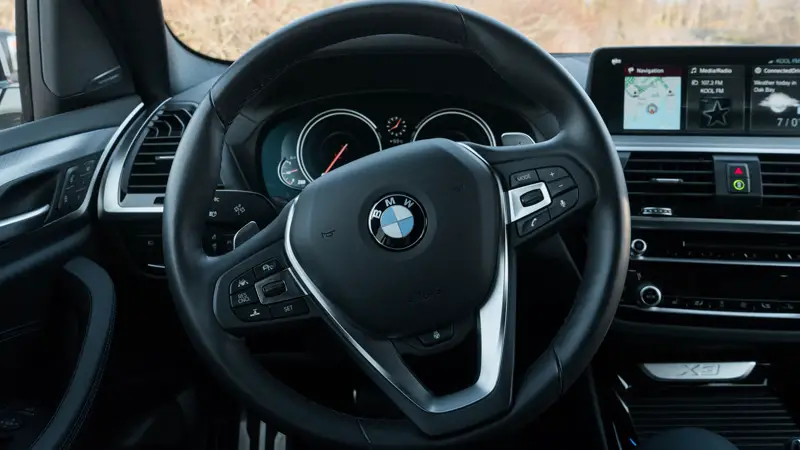Parking is an experience that induces thrill and terror in the hearts of drivers worldwide. As cars get bigger, parking spaces remain the same, and it’s not getting easier to maneuver into tight spaces. Between these parking aids which is better: parking sensors or cameras?
Each one provides functions that the other lacks, so it is tricky to decide which one is better. However, the better one for you depends on your personal preference and how you use the technology to help you park.
This article considers whether reversing cameras and parking sensors are worth it and which is the better of the two. I also discuss the differences between a rear parking sensor and a rear parking camera.
Are Reversing Cameras and Parking Sensors worth It?

Considering how crowded roads and parking spaces have become, a little guidance on getting in or out of tight spaces is helpful. Drivers who started driving long before the advent of parking aids may scoff at them. But for others, driver-assist technology is the only solution to the difficult task of parking.
Parking sensors can gauge your distance from objects and other vehicles on the road while reversing cameras give you visual cues when maneuvering your car in or out of a parking space.
They might not be a priority like seatbelts and airbags, but they are undoubtedly helpful for daily use. Parking accidents account for many driving accidents, even though they rarely result in injuries.
Vehicles, especially trucks, have blind spots where you cannot see while reversing, and it is easier to drive over something or hit an object in reverse. Many cars also have limited rear visibility that hinders good watchfulness during parking.
These limitations can be overcome by parking sensors and reversing cameras. They make parking maneuvers easier, prevent accidents (like running over children), and improve visibility.
While parking aids are not meant to replace your eyes and awareness of your environment when you park or drive, they make parking more accessible, and that’s a good enough reason to make them worth it.
Which Is Better: Parking Sensors or Cameras?
One way to figure out the better option between two items is to look at the pros and cons of each, so here are the pros and cons of parking sensors and reversing cameras:
Pros of parking sensors
- They function well in any weather conditions.
- You can look behind you when parking instead of at your dashboard.
Cons of parking sensors
- They might not be beneficial when backing up larger vehicles.
- It can be expensive and challenging to install parking sensors.
Pros of reversing cameras
- They might be cheaper than parking sensors if the car already has a Rear View Monitor For Car Reverse System.
- It is beneficial for people with limited mobility.
- Larger cars benefit from it when parking.
Cons of reversing cameras
- They require a screen to function.
- You might be unable to use the camera in bad weather.
- They also limit your attention to the dashboard, which may be dangerous.
Another way to compare both is to look at their effectiveness, whether you use them in combination or solo. A US-based Insurance Institute for Highway Safety (IIHS) conducted a survey, and it showed that reversing cameras were more helpful than parking sensors or both combined.
Parking sensors covered a low range, have a slower warning ability, and drivers ignored them when combined with reverse cameras. They could also give you a false sense of security, causing you to pay less attention to your reversing camera.
In contrast, reversing cameras widen your area view, and they cause a lower crash rate, according to the survey. It may be because driving is more of visual activity, and you are more likely to pay attention to your screen than what the sensors indicate.
Ultimately, it depends on your preference and how you use the technology – you may prefer visual instructions to sounds.
What Is the Difference Between a Rear Parking Sensor and a Rear Parking Camera?

Although reversing cameras were first developed in the 1950s, they only became popular in 2000, when Nissan launched the Infiniti Q45. Similarly, parking sensors were initially designed to aid blind people in the 1970s, but they got into mass-market vehicles in 2003.
To fully grasp their differences, I describe each parking aid’s function, location, and design below.
Rear Parking Cameras
- Function
They show you exactly what you are backing up against when reversing, how close it is, and some even have guidelines that help you position the car precisely into your prospective parking space.
- Location
It consists of two parts – a camera placed at the rear of your vehicle, commonly around the license plate, and a monitor for viewing. The monitor could display in the rearview mirror or integrate with the dash radio.
- Types
- Wireless reverse camera kits are popular with DIY enthusiasts and easy to install.
- Rearview mirror systems replace the regular rearview mirror with an integrated monitor. The screen shows visuals from the camera, and some users may find it difficult to use because of the small screen size.
- Mountable screen systems are put on the sun visor or dash and are popular among drivers who prefer larger screens.
- Integrated units or factory-installed systems usually incorporate the camera system into the navigation or entertainment system. Screens are put in the console or dash.
Rear parking sensors
- Function
They use sonar to measure the distance from an obstacle when you set the car to reverse. The distances they provide are accurate, but you will have to pack by feel because there are no cameras.
- Location
It is attached to the rear bumper, and it alerts you with a beep if you move close to an object.
- Types
- Ultrasonic sensors gauge the distance using the sound waves bouncing off the objects in proximity to your vehicle.
- Electromagnetic sensors place an electromagnetic field around the car and alert you if anything enters this field.
- Sensors integrated with the car parking systems have the advantage of a rear-facing camera working with them.
If your car does not have either feature, you can buy an aftermarket parking sensor or reverse camera. Ensure its quality and compatibility with your vehicle before buying one.

